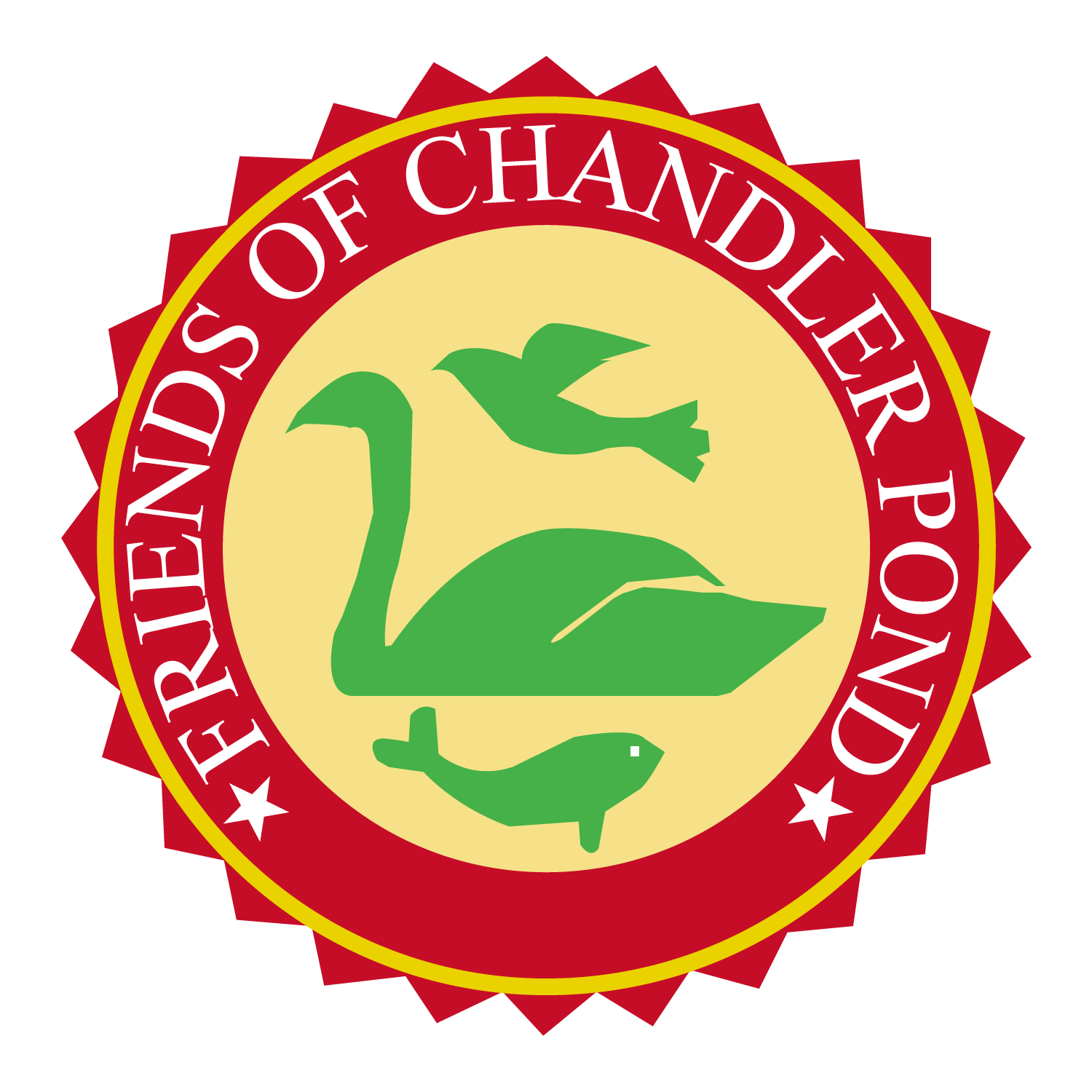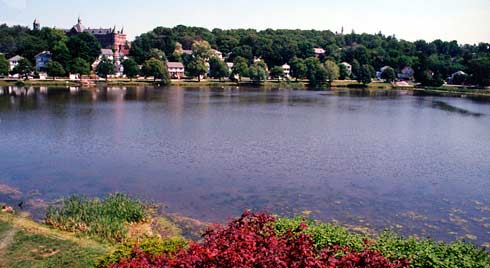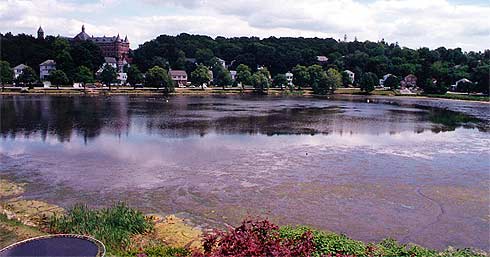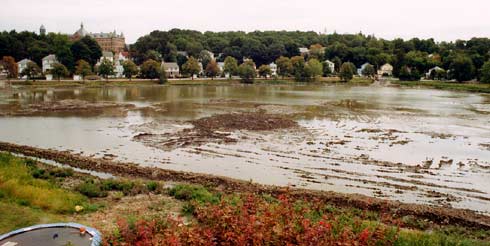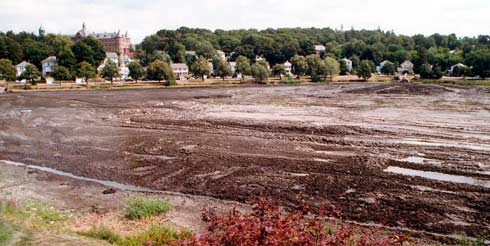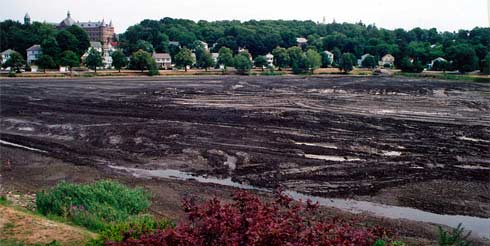Dredging of the Pond
Man-made in the mid-19th century, Chandler Pond is the last remaining pond in Brighton and one of the largest and most significant freshwater resources left in the city. In 1998, the the Boston Parks Department, in collaboration with the Friends of Chandler Pond, faculty and staff from the Harvard Graduate School of Design and the Urban Wilds Initiative undertook a dredging and pond restoration project, removing approximately 27,000 cubic yards of accumulated sediment. A project to address bank erosion and degraded wetland wildlife habitat along the pond shoreline was also undertaken at the same time. This project was jointly funded by the city and the Massachusetts Department of Environmental Management and involved planting 2,750 native wetland plants and installation of 300 linear feet of erosion control material.
Management of invasive aquatic plants
Friends of Chandler Pond volunteers extensively hand-harvested, using boats, waders, snorkeling, and a session by paid scuba divers to supplement the 2005 Sonar treatment. However, the rapid growth of many generations of Eurasian watermilfoil will eventually prevail. Since there is no adequate biological control currently available, not treating this shallow pond would allow the Eurasian watermilfoil to cover the surface, damage the fish population, and promote the mosquito population.
